It is impossible to understand a country without delving into the peculiarities of its national language. And although today a rare Swede does not speak English (which here is more of a second native than a foreign one), the Swedish language with all its complexities and nuances is the real key to the persistent Nordic character of the people of Sweden.
Swedish language, like Icelandic, Danish, Norwegian and Faroese, belongs to the northern group of Germanic languages. In addition to being the state language of Sweden (about 9 million people consider it their native language), Swedish also bears the status of the second state language in Finland - about 300,000 people speak it here.
The closest sounding to Swedish is Norwegian. A Norwegian and a Swede will understand each other from the first word. As for the Danish language, which is also very similar to Swedish in its lexical and grammatical structures, here the differences are manifested in terms of intonation and sound. That is, it will not be difficult for the average Swede to understand what the Danish newspapers are writing about. However, Danish radio news will cause some difficulty. But Swedes and Danes are happy to visit each other and communicate in their native languages, simply by adjusting the speed and choosing the words more carefully.
For those wishing to better know a country like Sweden, it is better to learn the language with the help of native speakers, in Sweden itself. However, anyone who speaks a little Swedish will not feel like a stranger in Denmark and Norway. And although there are often cases of amusing inconsistencies in the meanings of words in these languages, it will not be difficult to understand a native speaker from a neighboring country.
Swedish as the official language of Sweden
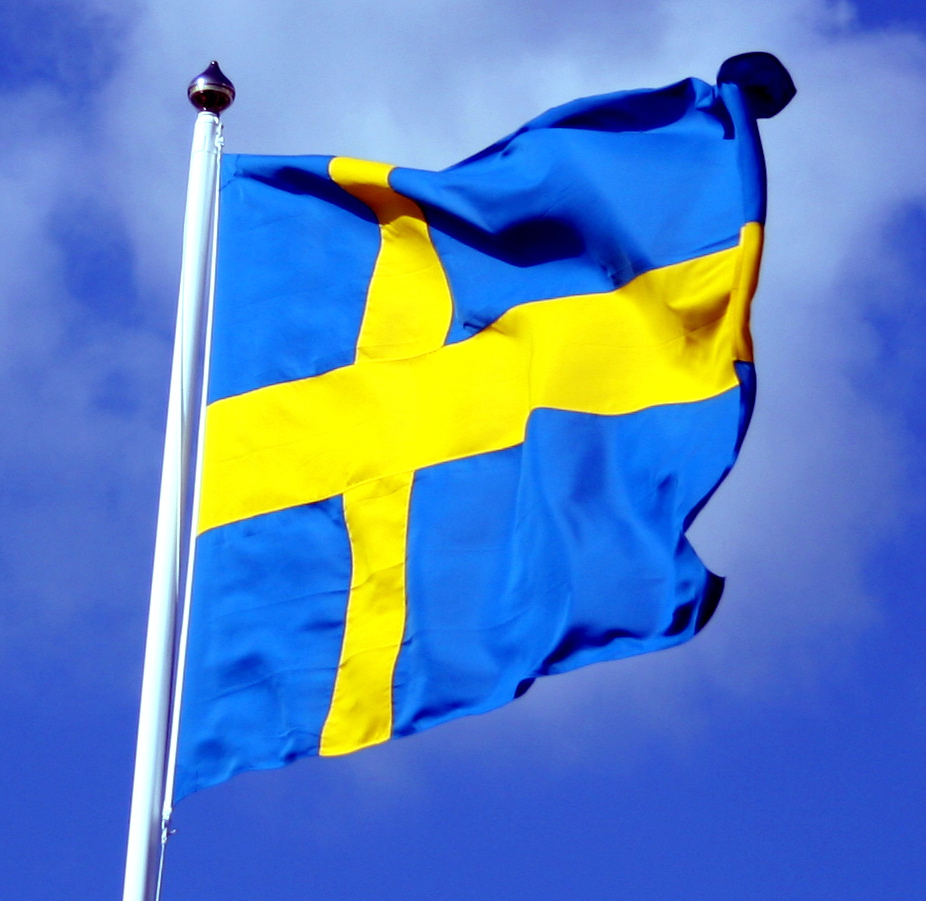 It is one, but has many dialects. Despite the fact that the number of speakers of it is small, pronunciation often differs even among residents of neighboring cities. The difference is especially felt when communicating with the inhabitants of the southern regions - Blekinge, Skåne, Småland.
It is one, but has many dialects. Despite the fact that the number of speakers of it is small, pronunciation often differs even among residents of neighboring cities. The difference is especially felt when communicating with the inhabitants of the southern regions - Blekinge, Skåne, Småland.
For those who want to understand from their own experience what language is in Sweden, you need to start learning it. Correct intonation and pronunciation can present a certain difficulty on this path (stress in many words radically changes their meaning), while grammar is quite simple. In addition, the problem is presented by the excess of vowels that do not match in Russian.
So, the official language of Sweden is interesting and multifaceted, it originates in the times of the harsh Vikings and still keeps the harsh northern soul of this people.
Swedish lessons -
how to start learning Swedish: what you need to do. Motivation.
the head of the section is the teacher of the Swedish language Marina Gurenko.
Popular
Photo source: matthias.nu There are several ways to greet in Swedish. Below I will list the most important and most ...
Starting to study any foreign language, you should definitely familiarize yourself with its basics. Swedish is not ...
It is very Swedish to use one word for a dozen feelings, emotions and states. For example, the word bra, literally meaning good / good, and can also be translated as “fine,” “wonderful,” “normal,” “excellent,” “not bad,” and so on, depending on the context. Word trå kigt — synonym for "bad", "boring", "boring", "difficult", "hard" (the list goes on as well). The severity of the emotion remains entirely at the discretion of the speaker. The heroes of the film director Roy Andersson, repeating one after another: « Vad roligt att hö ra att ni har det bra!» (“How great / happy / nice that you are doing well!”), This is how the word roligt (“great / joyful / pleasant”) is used. They, perhaps, are not at all happy and not pleasant, but the salutary non-specific word does not sound false, and allows them to observe decency.
5. A moderately well-fed man in his prime
There are many words and expressions in Swedish that have no literal equivalents in other languages. The main one is lagom - a real concentrate of Swedishness. ("Moderately, just right") is the informal motto of most Swedes, expressed in aspiration. The Swede will use this mantra word when answering how much sugar to put in tea, to what extent to fry meat, what should be the temperature in the room. Lagom means that everything should be in moderation, by no means too much. Ending — om reminds of the times when there was a case system in Swedish and - then the versions diverge - either everything should have been done "according to the rules / law" or "the whole team" ( lag: "Law" and at the same time "command").
Whichever version is more accurate, judge for yourself: Carlson does not suffer from malnutrition, but to call him a glutton bad manners: he is moderately - lagom - a well-fed man in his prime.
6. Cozy word
Another word that is difficult to find an exact analogue in other languages \u200b\u200bis mysigt... Literally translated, it means "cozy". However, the Swedes use this word and its related mys (initially: "comfort") most often in the meanings "nice", "beautiful", "cute", "comfortable". If a Swede asks what you did on the weekend, and you describe to him the picture of a family idyll by the fireplace or tell him about dinner at your favorite restaurant, the interlocutor will most likely say in approval: Vad mysigt! ("How cozy / nice / cute / wonderful!"). Hence another untranslatable, purely Swedish concept - fredagsmys... Swedes love to laze on the couch in front of the TV and crunch on chips, popcorn or caramels, especially on Fridays. (fredag). It is this ritual that is reflected in the word fredagsmys.
7. Swedish family - in Swedish
Many Swedes prefer a civil marriage to an official marriage (which does not at all imply licentiousness, with which the crafty "" is mistakenly associated).
S ambo - translated means "roommate". This term is used when couples do not formally marry, but share living space and household expenses. According to statistics, Swedish couples prefer status sambo and down the aisle in no hurry. The word is comfortable and gender-neutral: suitable for a partner of either gender. Särbo - one or one with whom the Swede is in a relationship, but lives separately. Exotic mambo means an adult still living with mom. And if the relationship is exhausted and the time comes to part - this, of course, is difficult, but in most cases, diverging partners will take care of children in turn; mom, no doubt, can, and then, most likely, will enter into a new union. And children are not a hindrance to this. In the lexicon of children, then, for example, will appear bonuspappa, bonusfarmor, bonussyskon ("Bonus" dad, grandmother, stepbrothers and sisters). If mom's new guy so-so, then for the eyes he can be called and plastpappa ("Plastic daddy"). But with the love that Swedes surround children, relatives and foster children, most likely, he will become pluspappa ("Plus-daddy"). Another dad is great.
8. Dialects - not to count
On a global scale, Sweden is a small country, but it is enough to drive a hundred or two kilometers through it to notice that a gas station employee, a saleswoman in a cafe and a police officer suddenly spoke differently. Within the country and in neighboring Finland (which was part of Sweden until the beginning of the 19th century), one can count a hundred dialects, which are strikingly different from each other in both pronunciation and intonation. Standard Swedish, so called rikssvenska, is based on dialects of the Stockholm region. But no one is forcing them to use it: on the evening news on Swedish television, the presenter can speak Stockholm, the reporter can speak Gotland, the meteorologist can speak Finnish, and the sports commentator can speak Sokanskom. Understanding the inhabitants of the southern province of Skåne is a challenge for Swedes from the central and northern regions. Skåne borders Denmark and, by virtue of common history, gravitates towards Danish pronunciation. It is customary to joke good-naturedly over the Horse. The presenters of the Eurovision Song Contest in Sweden first of all say: "Yes, we know what you are thinking now - God, these hosts from Skane again!" At the national level, all major dialects are considered equal, and none is considered the only correct one. Long live diversity.
9. Inhale - exhale
A peculiarity of a conversation in northern Sweden: during a conversation, a Swede suddenly and quite loudly draws in air through his mouth. An inarticulate sound hangs in the air. The conclusion that the interlocutor began an asthma attack is erroneous. Don't worry, he's with you. For laconic northern Swedes, it is customary to express consent - without exchanging for unnecessary words.
10. You, you, you
As in most other languages, in Swedish there is a form of addressing the interlocutor in you ( du) and you ( ni). At the same time, in practice, the Swedes turn to you ( du) to almost everyone, regardless of age and social status. This is the legacy of the language reform carried out by the socialists in the late 1960s and early 1970s. Contacting you ( ni) will make the interlocutor alert: am they hinting to me that I am very old? curry favor and want something from me? emphasize the distance? or is it a joke? It is not suitable to appeal to you only for members. But they are not addressed to you, but in the third person: "Does the king want to taste venison?", "Is it possible to take a picture with the queen?" The king and queen react to an erroneous "you" without irritation: subjects regularly make mistakes.
Sweden is an amazing country that gave the world Carlson, ABBA group and a computer mouse. It has strong trade unions and the longest life expectancy in Europe. Well, the Swedish language fully reflects the worldview of the Swedes themselves - it is democratic and very interesting to study.
1. Swedish is a representative of the northern group of Germanic languages. It is state-owned in Sweden and the second state-owned in Finland. Swedish has a lot in common with languages \u200b\u200bsuch as Norwegian and Icelandic. It is noteworthy that the Swede can easily read books and the press in Danish, but does not understand the oral speech of the Danes at all.
2. Some words are spelled and sound the same in Swedish and Danish, but have different meanings. So, for example, the word "by" means "village" for the Swedes and "city" for the Danes.
3. Many young Swedes speak the so-called Swenglish, which is a kind of mixture of Swedish and. In fact, English in this country is used at the same level as the state language, although it does not have an official status.
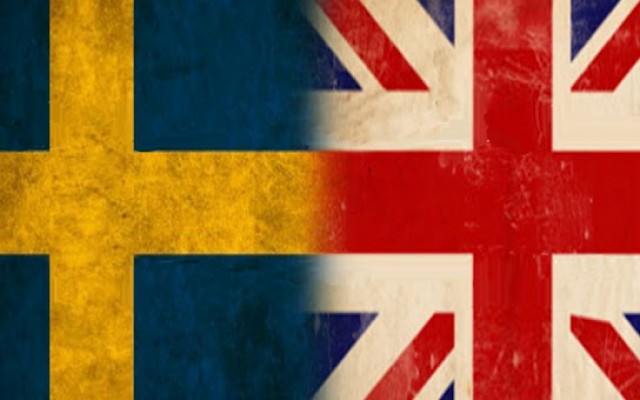
4. The Swedes were not afraid of borrowing from other languages \u200b\u200bbefore. So, back in the 14th century, together with the Hanseatic Trade Union, a lot of words came to Sweden regarding the areas of trade, construction, crafts and not only. They continue to be actively used to this day.
5. There are many different dialects of Swedish. In their formation, they managed to avoid the influence of traditional Swedish, and therefore they sometimes have almost unique grammatical and phonetic properties. And although linguists conventionally divide Swedish dialects into six main groups, in reality their number exceeds several hundred.
6. Historically, Swedes are not used to referring to each other as "you". Regardless of the status and age of the interlocutor, they use the pronoun "you" when addressing him. The only exceptions are members of the royal family, who are usually addressed by title or in the third person.
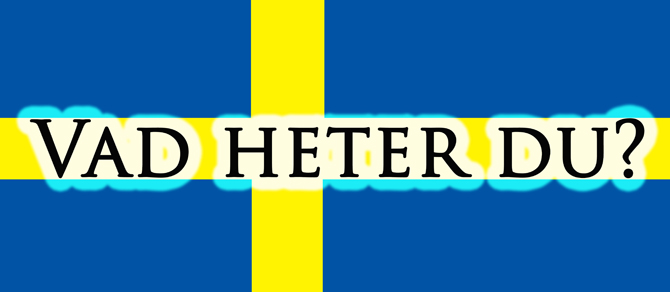
7. Until the 60s of the twentieth century, the address in the third person was also used in relation to other interlocutors of high status. But then this tradition was abolished, as it greatly impeded communication.
8. There is no masculine or feminine gender in Swedish. But there is general and average. The fact is that the forms of male and female genders were so similar to each other that over time these two genders merged into one common one.
9. Swedish phonetics is very complex in comparison with Russian. Some Swedish vowels simply have no counterpart in Russian. The meaning of words among the Swedes often depends on the length or frequency with which individual sounds are pronounced.
10. In the Swedish language there are practically no sounds "Z" and "C". They are found only in borrowed words, and even then the Swedes pronounce them in their own way.
11. Swedes don't like adjectives and prefer to complicate nouns instead of using them. So, such phrases as “horse power”, “chocolate drink”, “air pollution” and “design changes” are translated into this language in just one word.
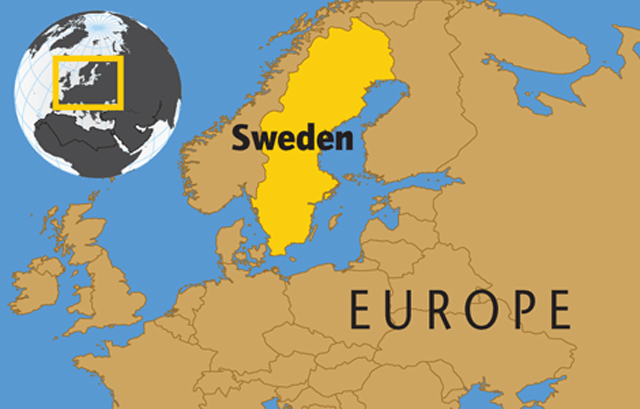
12. Informally, the Swedish language is divided into two types - simple and complex. Most people do not use words such as "objective", "execution", "review", "consistency" in their everyday speech and often do not even know their meaning. Therefore, in order to be known as an erudite person, you just need to add them to your vocabulary.
13. In the Swedish language there are absolutely no such familiar concepts as a wall bar, a buffet and a Swedish family. Moreover, modern Swedes have never even heard these expressions. They call the Swedish wall a frame with crossbars, a sandwich buffet, and what we call a Swedish family is so rare in Sweden that it has no name at all.
14. The Swedish language has a unique letter - "å". It originated in the 16th century, when, as the Swedish language developed, the long "a" began to be read as "o". To make everything extremely clear, this phenomenon was reflected in the letter in the form of a small "o" placed above the letter "a". Neighboring peoples, including Norwegians and Danes, did not accept the novelty and began to denote a long "a" by the following address: "aa". And although in the 20th century linguists still introduced the letter "å" into these languages, the old norm is still found in the names of some settlements. And one example of this is the Danish city of Aalborg. By the way, ignorance of Swedish phonetics was the reason that many Swedish names, surnames and place names came into Russian with a mistake. For example, the Swedish physicist Anders Jonas Ångström, whose name is pronounced Andes Jonas Ongström, in Russia unwittingly became Anders Jonas Angström.
15. Symbol @, which we call "dog", in Sweden is called "elephant" or "trunk".
One of the most popular languages \u200b\u200bfor studying in a Scandinavian School is Swedish. The most common reason why people come to us to learn Swedish is interest in the language, followed by work and study in Sweden. Sweden attracts with its unusual culture, rich Viking history, unique position in the world of modern design.
The Swedish language at the Scandinavian School is:
In the courses of the Scandinavian School, the Swedish language is taught by highly qualified teachers, the authors of exclusive programs that provide an opportunity to learn how to express your thoughts about various events and phenomena. In the Swedish language courses, you will be able to gain knowledge of the grammar and vocabulary of the Swedish language, as well as information about culture, history, modern life in Sweden.
To study the Swedish language, the most modern teaching aids by Swedish authors, audio and video materials are used, which provide a real opportunity to master the Swedish language and acquire skills to further improve this knowledge. Our teachers have collected a large number of Swedish manuals, books and magazines as additional literature for classes and home reading.
As part of the course, the phonetics and vocabulary of the Swedish language are studied, great attention is paid to grammar and, on its basis, speaking practice, reading, translation, listening comprehension. In the learning process, a large number of practical examples are considered, extracts from modern periodical literature are used. The main tutorial, which is being trained - Rivstart with a set of audio materials on a CD.
Especially for students studying Swedish, the Scandinavian School has developed programs of unique internships in the Swedish language both in Moscow and in Sweden, with the participation of a professional native speaker teacher. A language internship is a surefire way to move to the next higher level of proficiency in Swedish, gaining invaluable experience of unique learning and language practice.
For those who are already studying Swedish and have an intermediate level of knowledge of the Swedish language (from level A2 and above), within the walls of the Scandinavian School there is Swedish Speaking Club, within which you can always hear live Swedish and communicate with a native speaker.
Swedish is part of the Germanic language group of the Indo-European language family. For this reason, it shares a lot of grammar and vocabulary with languages \u200b\u200bsuch as English and German. This makes learning Swedish much easier for those who are familiar with these languages \u200b\u200bspoken here. Swedish is not only the official language of Sweden and the autonomous Åland Islands, but is also the second official language of Finland. Swedish is the most spoken language in Scandinavia, with over nine million speakers.
The languages \u200b\u200bthat are now spoken in Scandinavia evolved from the Old Norse language, which was not very different in what is now Denmark, Norway and Sweden. The three continental Scandinavian languages \u200b\u200b(Swedish, Danish and Norwegian) remained virtually one language until about 1050, but then began to separate.
Standard Swedish (called "state" by the Swedes - rikssvenska - or, sometimes, "high" - högsvenska) is the most common variant of the Swedish language, which grew out of the dialects of Stockholm and its region and settled down by the beginning of the 20th century. It is broadcasted by the media (although quite often journalists speak with a strong regional accent), it is taught in schools, and almost all Swedes understand it, although some local dialects of Swedish can differ so much both in pronunciation and grammar that they are incomprehensible to those who do not know.
Many dialects of the Swedish language have survived - local variations of the language that have escaped the great influence of standard Swedish and have signs of independent development since the time of the Old Norse language. Many true rural dialects, such as those in Dalarna or Österbotten, have very prominent phonetic and grammatical features, such as plurals in verbs or archaic case inflection.
Earlier there were Swedish-speaking communities in Estonia, in particular on the islands of the Baltic coast. Swedish-speaking minorities were represented in parliament and were allowed to use their mother tongue in parliamentary debates. Today Estonia has a very small number of the oldest Swedish-speaking citizens.
After the loss of the Baltic territories by Sweden in the war with Russia at the beginning of the 18th century, about a thousand Swedish-speaking residents were forced to march to Ukraine, where they founded an Old Swedish village, north of Crimea. Several of the village's oldest inhabitants still speak Swedish and observe Swedish holidays, although their dialect is likely to be in danger of extinction.
Course tutorials:
Rivstart: A1 + A2 Textbok med cd (mp3) |
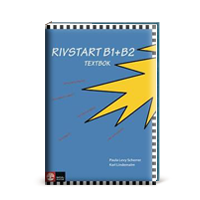 Rivstart: В1 + В2 Textbok med cd (mp3) |
Forms of education
Teaching in groups
Teaching in groups is the most accessible and popular form of study at the Scandinavian School. When teaching in groups, a fixed schedule of classes is used, focused on specific days and times of training. You can choose the most convenient schedule of classes in the evening, daytime, morning time both on weekdays and on weekends.
The basic Swedish course in groups lasts about two to two and a half years, depending on the chosen class schedule. At the end of the basic Swedish course, the level of knowledge usually corresponds to level B2 according to the European language portfolio system.
After completing the basic Swedish course, you will receive a corporate certificate in Swedish with confirmation of course completion and you can continue to improve your skills in Swedish Speaking Club or on our special language internships in Sweden and Moscow.
For those wishing to take the international exam in Swedish - SWEDEX - special training is possible both individually and in a group.
Most of our teachers advise group learning as the most effective way to learn Swedish, as it allows you to simulate the situation of live communication in the classroom, get acquainted with different speaking styles, exchange interesting and useful information on learning Swedish.
At the moment, more than 10 groups of Swedish at different levels are studying at the Scandinavian School.
If you have already studied Swedish and want to continue your studies further, you can always come to us at free testing or perform the test electronically... In a Scandinavian school, you will definitely find a group that matches your level.
Short Phonetic Course in Swedish
The Scandinavian school invites everyone to a unique short phonetic course in Swedish... All Swedish language learners will benefit from this course. The phonetic course is suitable both for those who have recently become familiar with the Swedish language and for "advanced users"!
The core of the course will consist of:
* training of pronunciation of individual sounds,
* practice of correct reading,
* exercises for intonation and rhythm,
* tonic stress training.
Tongue twisters, songs in Swedish, special phonetic exercises, as well as the secret work of our experienced teacher will help you with this.
If you want to improve your pronunciation, get rid of the accent and make your speech sound like "rolling stones in a forest stream", our phonetic course is what you need!
Summer intensive courses
The Intensive Swedish Course is a short (2-3 months) course of the Swedish language, which is held several times a year for those who need to quickly and effectively acquire basic Swedish communication skills and knowledge of the country of the target language. The lesson schedule includes up to three lessons per week. During your studies, you will receive the lexical minimum necessary for communication on simple everyday topics, and the basics of grammar. After completing the intensive course, you can continue your studies in one of the groups of the main Swedish course.
Individual training
If you have a difficult schedule, shift work schedule, or just want to study Swedish one-on-one with a teacher, we can offer you an individual form of study. This form of training allows you to draw up a schedule of classes taking into account your wishes in terms of time and intensity of classes, and get all the attention of the teacher in the class.
Distance learning
Distance learning is a new form of education dictated by today's hectic pace of life and modern information technology. Training takes place remotely according to a pre-agreed schedule using the Internet. This form of study is also suitable for those who live outside the capital and have an irresistible desire to learn Swedish. With the use of appropriate programs, it is available to anyone, even if you live in another city. Distance learning at a Scandinavian school is effective, reliable and fun.
Corporate training
For employees of companies and organizations, we offer staff training both at the Scandinavian School and directly at the workplace. It is possible to train groups of different levels of language proficiency and individual employees. Our experienced trainers will test employees, offer a training program tailored to the specifics of the company and select the necessary training materials and literature.
At the moment, on the basis of corporate training, we are conducting classes for employees of Nordea Bank JSC, the Embassy of Finland in Moscow, Intego-Logistic LLC, the Moscow representative office of Statoil ASA LLC. Also, our listeners were employees of companies such asVR-GROUP LTD (Finnish Railways), Castren & Snellman Law Firm, Lindab International Group of Companies.
Professional education
For teachers of the Swedish language, the Scandinavian School conducts special professional internships on the methodology of teaching the Swedish language with invited specialists from Sweden. As part of such an internship, you will learn what new trends are emerging in the field of teaching the Swedish language, what features must be taken into account when teaching students of different levels of training, what new teaching aids are being published both in Sweden and in Russia. Participation in a professional internship is a great opportunity to increase your professional value and exchange invaluable experience and interesting ideas with colleagues.
Lesson schedule for beginner groups and cost
| Start of classes | Class time | The cost (for adults) |
The cost (for pupils, students ** and pensioners) |
Teacher | |
|---|---|---|---|---|---|
| Evening classes: | |||||
| January 2018 | 19:00 - 21:15 Evening classes mon th | from 7 900 rubles * from 8 800 rubles * per block 24 academic hours | from 7 100 rubles * from 7 900 rubles * per block 24 academic hours | ----- | Remaining: 7 seats |
| Weekend groups: | |||||
| January 2018 | 14:30 - 17:30 Day off saturday | from 6,000 rubles * from 6,700 rubles * per block 16 academic hours | from 5 400 rubles * from 6 000 rubles * per block 16 academic hours | ----- | Remaining: 7 seats |
| * With a one-time payment of one level 96 ac./h. weekdays evening (4 months) RUB 31.600 The cost of classes when paying for only one month of training is 8 800 rubles. for pupils and students 28.400 rubles. The cost of classes when paying for only one month of training is 7 900 rubles. * With a one-time payment of one level 96 ac./h. weekdays day / morning (4 months) 24.800 rubles The cost of classes when paying for only one month of training is 6 900 rubles. * With a one-time payment of one level 96 ac./h. day off (6 months) 36.000 rubles The cost of classes when paying for only one month of training is 6,700 rubles. ** For full-time students. |
|||||
| Swedish conversation club with a native speaker | |||||
| Fridays every week | 19:00 - 21:15 Evening classes Friday | RUB 4,000 for a block of 4 lessons | RUB 4,000 for a block of 4 lessons | join | |
Cost of classes
Teaching in groups
Evening time
With a one-time payment of one level 96 ac. hours (4 months) - 35,200 rubles. RUB 31,600 (for adults)
With a one-time payment of one level 96 ac. hours (4 months) - 31 600 rubles. RUB 28,400 (for pupils, students and pensioners)
Block of classes: 24 ac. hours per month - 9 800 rubles. RUB 8 800 (for adults)
Block of classes: 24 ac. hours per month - 8 800 rubles. RUB 7,900 ()
Morning and afternoon time on weekdays
With a one-time payment of one level 96 ac. hours (4 months) - 27 600 rubles. RUB 24 800 (for adults)
With a one-time payment of one level 96 ac. hours (4 months) - 24 800 rubles. RUB 22,400 ( for schoolchildren, students and retirees)
Block of classes: 24 ac. hours per month - 7,700 rubles. RUB 6,900 (for adults)
Block of classes: 24 ac. hours per month - 6 900 rubles. RUB 6,200 ( for schoolchildren, students and retirees)
Weekend
With a one-time payment of one level 96 ac. hours (6 months) - 40 200 rubles. RUB 36,000 (for adults)
With a one-time payment of one level 96 ac. hours (6 months) - 36,000 rubles. RUB 32,400 ( for schoolchildren, students and retirees)
Block of classes: 16 ac. hours per month - 7,500 rubles. RUB 6,700 (for adults)
Block of classes: 16 ac. hours per month - 6,700 rubles. RUB 6,000 ( for schoolchildren, students and retirees)
Distance learning
Course 48 ac. hours (3 months) - 18,000 rubles.
Course 36 ac. hours (3 months) - 14 800 rubles.
Individual training
Classic private lessons(at school): 1 lesson (2 academic hours) - 2 800 rubles *
Individual lessons with departure: 1 lesson (2 academic hours) - 3 100 rubles *
Distance individual lessons:1 lesson (2 academic hours) - 1 600 rubles *
* the number of lessons planned within one month is paid in advance
Course instructors
Titarenko Daria
Swedish language teacher
Kushnarenko Julia
Swedish language teacher
Zhiltsova Elena Leonidovna
Swedish language teacher
Olga Sushkova
Swedish language teacher
Sapronova Varvara
Swedish language teacher
Belkind Alexandra
Swedish language teacher
Magnus magnusson
Swedish language teacher
Yurchenko Natalia
The Swedish Conversation Club "Scandinavian Friday" is a real help for those who do not have enough conversational practice in Swedish in their everyday life, and for those who have already completed the basic Swedish course and wish to improve their speaking skills.
cost of one visit - 1200 rubles,
the cost of a subscription for 4 visits - 4,000 rubles.
Language internships
Are one of business cards Scandinavian School. We have developed a number of unique programs that take place several times a year, both in Sweden and in Moscow, especially for listeners studying Swedish. A language internship in Swedish is a surefire way to move to the next higher level of proficiency in Swedish, gaining invaluable experience of unique learning and language practice.
Language internship in Swedish gives a real opportunity to consolidate and improve the knowledge gained in the learning process, includes phonetics training, speaking practice with native speakers, modern, lively vocabulary of the target language and is a dynamic continuation of the Swedish language courses.
The next language internship will take place at the Scandinavian School in Moscow
The Scandinavian School invites students for an internship in the Swedish language. If you want to gain experience in speaking practice without leaving Moscow, as well as to consolidate and improve the knowledge gained in our courses, then classes with a native speaker teacher will be an interesting and effective step for you in learning Swedish.
General internship course - 16 academic hours.
Number of seats – 15.
At the end of the language internship, trainees are awarded corporate certificates in Swedish.
SWEDEX exam
 |
One of the best ways to test your progress in learning Swedish is to take the international Swedish language proficiency test - SWEDEX. SWEDEX is a one of a kind, unique international exam created by the People's University (Folkuniversitetet). Anyone who is not a native Swedish speaker can pass this test and receive confirmation of their level of proficiency in Swedish according to the generally accepted classification of the so-called European language portfolio. At the moment, you can take the exam at three levels of proficiency in Swedish: A2, B1 and B2. SWEDEX is approved by the Swedish Institute, and the exam results are recognized all over the world, regardless of how you studied Swedish. This exam examines all important aspects of Swedish: speaking, reading, listening and writing. The SWEDEX certificate confirms the level of knowledge of the Swedish language, and, therefore, opens up new career prospects in various fields of activity and allows the employer to fairly assess your advantages over other candidates. The SWEDEX exam can be taken at the Scandinavian School in Moscow. The exam is conducted by certified teachers Swedish language Scandinavian schools who have received the necessary training. At the end of the exam, you receive an internationally recognized certificate indicating the level of knowledge of the Swedish language. Beforehand, special preparation for the SWEDEX exam is possible - both individually and in a group. |










